Are Diptychs Old-Fashioned? A New Chicago Exhibition Casts a Contemporary Lens on the Ancient Form
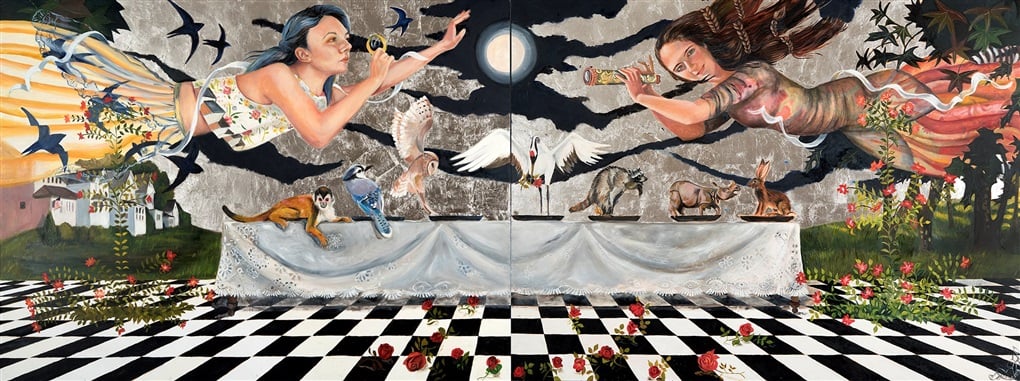

Katie White

If diptychs tend to call to mind 15th-century altarpieces cluttered with saints, it might be worth a visit to “Secondary Meanings: Figurative Diptychs” at the Zhou B Arts Center in Chicago. The new exhibition, curated by husband-and-wife collectors and curators Steven Bennett and Elaine Schmidt, is a close look at the contemporary relevance of the ancient two-hinged-panel display.
The exhibition, which was years in the making, is an almost dizzying array of interpretations of diptychs, triptychs, and polyptychs across painting, photography, and sculpture. The show features the work of 37 artists selected from an open call for multi-panel figurative works that had never been exhibited or even posted onto social media previously (the curators wanted to retain a ‘wow’ factor).
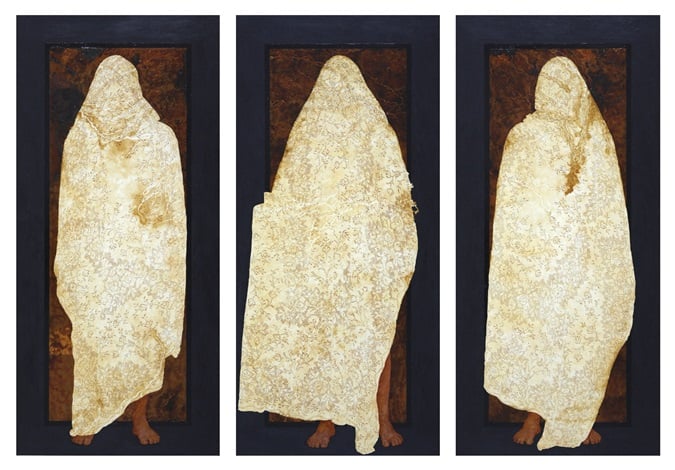
Zach Brown, Lace Triptych (2015). Courtesy of Zhou B Arts Center.
The diptych has its roots in the Roman Empire: the word was first used to describe folding writing tablets (from the Greek “dis,” meaning “two,” and “ptykhe,” meaning “fold”). In the millennia since, the diptych has risen to myriad artistic occasions: as the site of imperial portraiture; as icons toted by pilgrims; and perhaps most famously as altarpieces in many of the world’s churches.
Though the format has waned in ubiquity, the contemporary diptych is not unheard of: Andy Warhol created his iconic Marilyn Diptych with the form, while Francis Bacon made use of it with his dynamic double-portrait Double Take.
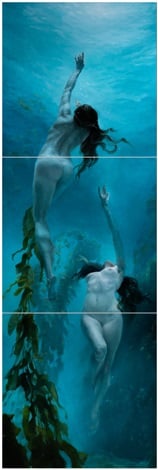
Lisa Keay, Ascending (2018). Courtesy of Zhou B Arts Center.
“Secondary Meanings” asked viewers to contemplate not only the relationship of the paired panels, but also the construction’s possible uses in contemporary practice. What exactly does the diptych (and its relative forms of the triptych and polyptych) allow the artist to accomplish and how does it affect the viewers perception?
The curators phrased the form’s potential quite vividly, saying “There is an additive power associated with two images working together although existing separately in different works. A diptych is like a martini with chipotle or a steak slathered with mango chutney. The flavors that exist separately are intensified by the presence of the other.”
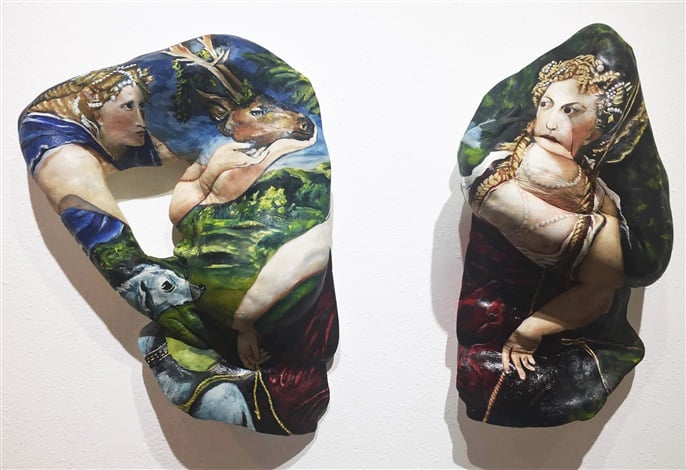
Laura Spector, The Huntress Diana with Two Nymphs, after Paris Bordone (2018). Courtesy of Zhou B Art Center.
There is no shortage of flavors here, with works that range from dramatically contemplative to openly lighthearted. In Laura Spector’s The Huntress Diana with Two Nymphs, after Paris Bordone the artist paints classical mythical subject matter on amorphous plaster polymer and foam shapes to engaging effect.
Other works are whimsical, or even nostalgic. Lisa Keay’s horizontal triptych Ascending pictures two nude women swimming towards the surface of the water in a manner that—in its aqueous, unreal beauty—calls to mind John William Godward’s early 20th-century depictions of water nymphs.
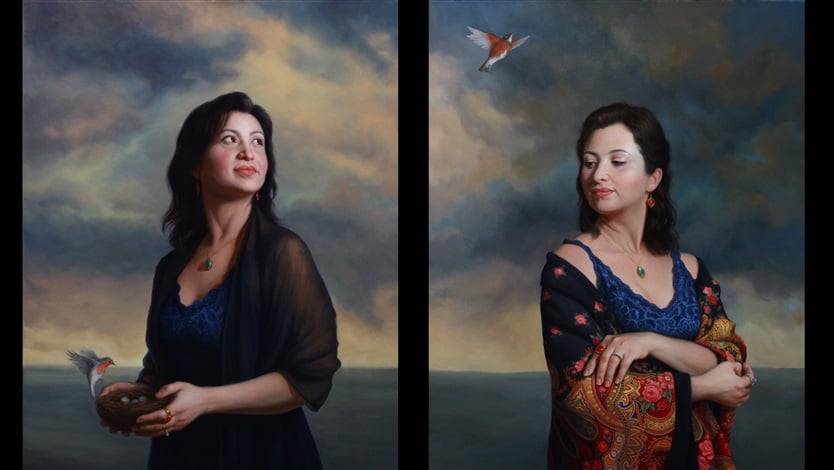
Brianna Lee, The Calling (2019). Courtesy of Zhou B Arts Center.
Many of the most effective works in the exhibition are those that engage imagery long associated with the diptych with a contemporary self-awareness and understated humor. Brianna Lee’s The Calling (2019), presents the same female figure in each of the panels, adorned in jewels and presented before an impressive natural backdrop, the figures are reminiscent of royal portraiture. At the same the images are surrealist: both figures gaze into the other’s panel, underscoring the both continuous and discontinuous nature of the diptych.
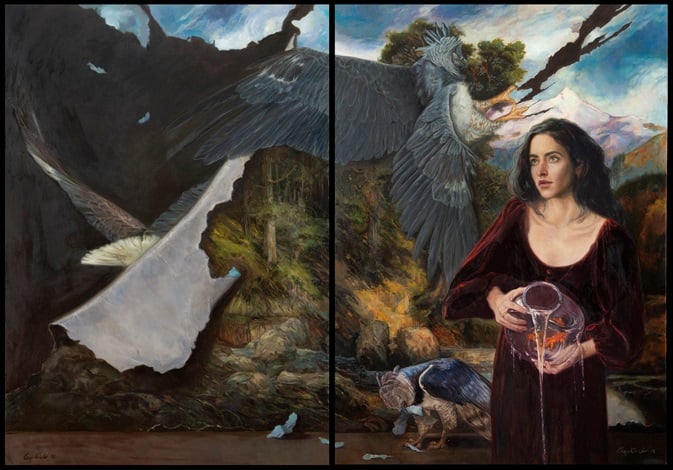
Gail Potocki, The Error of Time (2018). Courtesy Zhou B Arts Center.
Perhaps the highlight of the exhibition is Zach Brown’s Lace Triptych (2015), which presents three figures obscured by cloaks of copper leaf, garments reminiscent of the tunics worn by the saints and figures so often seen in diptychs. At at same time, these hidden, shrouded figures call to mind frescoes effaced by the ravages of time.
Here the diptych creates a multiplicity of meanings: there is the tension or dialogue between the panels, but then again between the past and the present. In a sense, the individual works mirror the exhibition as a whole. Harmony is not the objective, but rather the creation of an unending dialogue that keeps moving back and forth and forging new connections.
“Secondary Meanings: Figurative Diptychs” at Zhou B Arts Center in Chicago through July 12, 2019.